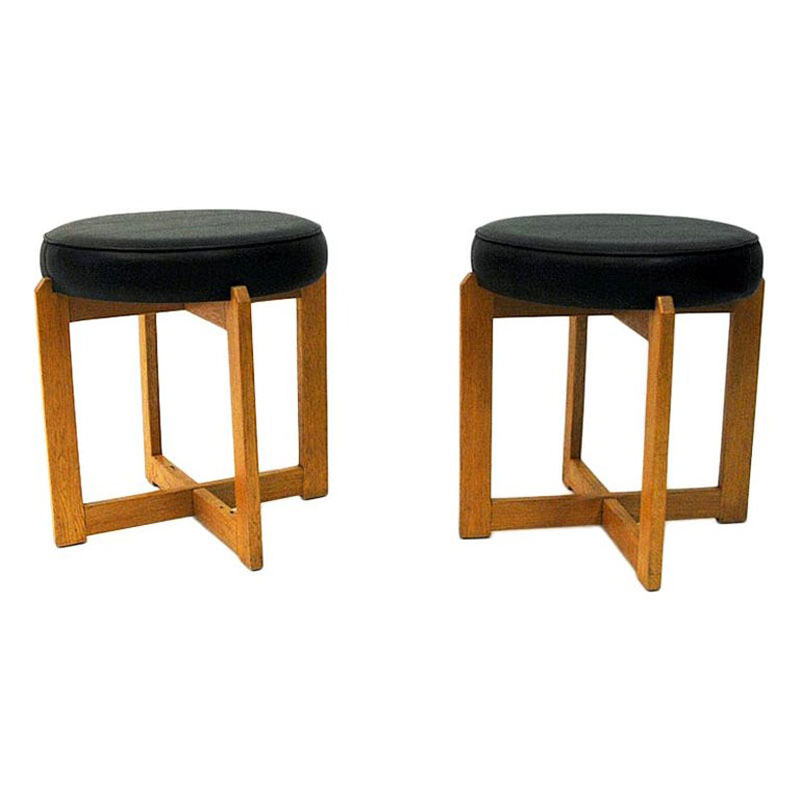Well now Azurechicken,...
Well now Azurechicken, Wright may have opened up the box but he didn't necessarily intend to let everything out. I can appreciate your sensibility and your architectural preferences. One additional thing regarding Olive's sense of Wright spaces, many of the residential designs employs a very overt and heavy exterior presence (lots of massing, overhangs, cantilevers, etc.,), which may indirectly impact their interior feel; that is, while there is no reason a large-boned rock of a home cannot have an expansive interior feel, in some cases it will not. Homes that appear bigger than life from the street have an uncanny ability to turn out to be not as "big as they look". Coversely, the well designed home with a more reserved facade and less exterior heft can often seem remarkably the opposite inside.
Not as big as it looks
You're so 'wright' that the interior seems smaller than the exterior and it probably is due to the massive cantilever. But I was so surprised by it. I had wanted to go see it for so long and I was disappointed. From the outside a masterpiece, from the inside a series of cramped spaces that feel more like camping in a cave. He was pretty innovative with material usage, though. Cork was used in all the showers at it still looked to be in great shape all these years later. I have also been to the Zimmerman House in Manchester, NH. It is a much nice home, in fact actually is a home versus a trophy weekend house. It have a better flow and fewer rigid built-ins. FLW also made an excellent blending of his prairie style and New England barns and capes. I like it much more than FW.
AzC, I agree about Koenig. His Case Study house is exquisite, but I have to imagine that it wasn't all that great to live in either! And for me, at the end of the day, a house that functions poorly as a home is a pretentious waste of space.
In 1985...
Dr. France Van Laethem and myself organised an exhibition on chairs. Not to give an overview of what had been produced but to shed some light on the mativation behind the designs. The first category were those chairs designed by architects with a very specific building in mind. Starting with the Victor Horta chair for the hôtel Tassel in Brussels (we borrowed th one from the Museum of Art of the Carnegie Institute in Pittsburg) Of course the Bloemenwerf chair of Henri Van de Velde, Charles Rennie Mackintosh's Tea salon (on Argyle street in Glasgow) chair, Josef Hoffman's Purkersdorf Sanatorium chair and finally Frank Lloyd Wright's Larkin Building chair.
What all of these chairs seemed to have in common was that they did not seemed to have the quality they had in their original setting. FLW's Larkin Building chair was probably th emost striking exemple of a piece of furniture taken out of it's natural context. With Hans Wegner, Verner Panton, Kjaerholm, Gaetano Pesce etc. in the same exhibition hall I was amazed by the difference between those "self-sufficient" designs and this first category. I think that that can be said about almost every piece of FLW furniture. It does well in it's original setting, but seems misplaced when standing on it's own. Obvious mistakes in proportions (the too narrow base of the Larkin Building chair for instance) disappear when the chair is back in it's original setting. I think that that is part of the disagreement between previous comments. I loved Falling Water. Having had a chance to see many great buildings from Alvar Aalto's work in Finland, Rietveld's in Holland, Le Corbusier's in Belgium, France and Switzerland, Renzo Piano, whom I think is one of the very best living architects, in France and Italie, Gaudi in Spain, Frank Gehry,you name it...nothing came close to Falling Water.
I'm so
happy to hear that. . .
Wright is no doubt permanently alien to some, and manna to others -- an extreme example of the love-it-or-hate-it syndrome ? The earthy quality in combination with disciplined (if exuberant) geometries is perhaps a major attraction, for me.
Scale is another matter; I am always surprised when seeing one of his buildings after knowing it from photographs. I secretly believe his small stature, and his wish to have achieve rich effects on a budget, together may have induced him to play with dimension in such as way as to produce 4/5 scale architecture. . .!
No one need apologize, either for loving or for hating the work. The comment about the furniture belonging WITH the interiors is certainly apt. That's why auctions of those furnishings are always so painful to learn of.
Falling Water is like a great bridge...
My favorite novella is A River Runs Through It by Norman MacClean. I grew up in a region of America with a great river--the Missouri. There were some fine bridges that spanned it there. I have lived much of my adult life farther west, where there are many great though little known bridges across all manner of great and not so great land and water features. It is, therefore, perhaps not surprising then that I have often said that in America, bridge builders of the 20th Century are also some of my most admired architects/designers, unknown though most of them are to me as I speed across their spans great and small.
Bridge builders in America have routinely accomplished the remarkable feat of beautifully harmonizing abstract form language with natural forms. The form languages of bridges speak deeply and poetically to me, especially from perspectives looking upwards. They are my secular American equivalents of Europe's great cathedrals and chapels--sacred places where reason, spirit and nature intersect in the now--places where I have been known to stop and meditate and listen.
The immense silence and elegant, rational forms of bridges connecting and spanning nature remind me of the resident virtue in human beings, however latent that virtue sometimes seems in the daily competition of living and the daily jeoapardy of surviving political barbarism.
Especially from perspectives looking up, a bridge becomes a realized symbol of the interwovenness of humanity and nature--and a proof, also, that the purity and virtue of human abstract reason can be elevated to an exhalted yet harmonious cooperation with the pure and virtuous threads of nature itself.
I like nature untouched as much as any person, but I like nature with a great bridge even more. The Golden Gate without the bridge was a fine narrows. But spanning the Golden Gate with a great bridge just did elevate the Gate to sacred magnificience. I pity all who have never seen it.
Falling Water is like a great bridge...Pt.2
Falling Water is the only house I have seen that speaks to me the way these bridges great and small do. The natural setting of Falling Water was probably splendid before the house was born. But Falling Water makes it magnificient. So much rational human endeavor disfigures so much nature. There can be nothing more edifying or hopeful than to see that a Modern house can crown nature and not just act as its sepulchre.
It seems no coincidence that so many photos capture Falling Water from an upwards perspective. Falling Water is like a great bridge. We wish to look up to it even when we find ourselves on its level or looking down at it. We wish to hear its silence and see its symphony of form ABOVE us. Like a bridge, or a great cathedral looked up to, Falling Water lifts our eyes upwards whether we believe or not. It dares us to believe in something greater than ourselves, whether we do or not. But like a bridge only, Falling Water spans and joins that upward look with the earth and water forms of nature--not just with the heavens. I am made better by looking it.
I cannot say what Falling Water would be like to live in, but I can say that, like many great bridges, and certain great symphonies, it embodies without a single word all that is most virtuous and admirable about human interaction with nature. Yes, we can leave nature alone. Yes, sometimes we should leave nature alone. But when something exquisite like Falling Water can be done, nature is the better for it, and so are we.
There can, I believe, be no higher, nor more fitting praise, paid to Wright's Falling Water than to embellish the creek there a little and say of the house: a river runs through it.
Since the interest rate...
Since the interest rate drop/housing boom days of the late 1990's, my city has grown ten miles to the east and south, with farmland and prairie being eaten up by row after row of 2.5 story, three-car-garage monsters from hell. There are pretentious wastes of space and then there are pretentious wastes of space.
One final comment on Wright's insistence on a total synthesis of design: change the exterior color schemes on his houses, even slightly, and particularly FallingWater, and you will note a very marked difference in effect, and not a good one. Now I know this can be said of many premier homes designed by prominent architects, but nowhere have I found it to be more pronounced than with the designs of Frank Lloyd Wright.
a number of things drive sprawl you refer too...
Low interest rates only increase the incentive to build. They do not on their own increase the incentive to sprawl. One can understand this when one looks at an episode of low rates and rising money supply and sees that high density places experience a spike in high density development, but not sprawl development replacing high density development. At the same time, in low density areas in suburbia and exurbia, you see a spike in sprawl but no corresponding spike in high density development in those low density areas.
The inference to be drawn is that regulation largely determines densities and that regulation is largely a product of what major players could impose on the development context during the previous boom. Further, what they imposed was a function of cost benefit optimization and consumer acceptance at resulting price point. Hence, each succeeding boom occurs with in a regulatory legacy constraint set that is behind by one boom and so no one ever really gets to do exactly what would fit best at the time.
The sprawl that concerns you is largely driven by the following:
lower land prices in lower density areas--usually farther out;
no growth ordinances that force growth asymmetrically into areas that permit growth--usually farther out; and
surprisingly green belts intended to contain urbanized development like those created around many American cities now that have the perhaps unintended consequence of causing growth to leap frog the urban service area AND the green belt and move out into ranchette style exurbia; this of course brings a further whammy of incentivizing low density development on septic tanks and much longer commutes to shop, school and get gas, etc.
a number of things drive sprawl you refer too...pt. 2
There is a final contributor to sprawl and that is transportation. If you build ANY roads out beyond the urban fringe passing any open lands remotely buildable, then people will migrate towards SUVS with 4 wheel drive to live on even the rudiments of roads.
And as we develop alternative energies, these are going to trigger even more sprawl. If you make it easier to live off the grid, then you make it easier live in exurbia.
And as we develop more fuel efficient vehicles, that will cause more sprawl unless gas prices are raised steadily high by taxes, because it is an historical fact that crude oil and gasoline markets are time and again plagued with oversupply that leads to extended periods of low oil and gasoline prices. The only reason gas prices are and have been high is that the central bank's oil oligopoly has arbitrarily set them high in America to make up for the losses they are sustaining in places like Venezuela where gas is being sold for $.13/gallon. But the problem, everyday more countries are dropping wells and producing oil and flooding the markets. The central bank oil oligopoly is in a foot race with these noncooperative oil producers. They have to take over more and more of the oil fields of the world and the pipelines, as well, and take them out of production (what they have done in Iraq, and what they would like to do in Iran) to make up for the Russias and Venezuelas that are dumping oil and gasoline for a song. If the independents keep producing more, eventually the central bank's oil oligopoly will lose its ability to set price anywhere and prices of oil and gas will plummit; then you will see some serious sprawl. Imagine: cheap gas and high mileage cars combined with high property values in developed areas and the spread of alternative energy sources allowing us to live off the grid.
a number of things drive sprawl you refer too...pt. 3
Ironically, an environmentalists best friend may turn out to be the central bank and its oil oligopoly. True, it stimulates alot of development, but because it struggles with all its power to stay in control of all of us, it keeps oil prices up, oil competitors out, oil supply down, and discourages alternative energy sources as much as possible.
I frankly do not worry about sprawl or high density. I figure there are some persons and some firms and some land uses that just prefer one or the other for either rational or greedy, or sentimental reasons. I say let them have their ways. What we have to focus on is in making sure that however one chooses to live, one limits one's pollution as much as possible, or face massive taxes for not doing so.
I have looked at trade offs between low and high density and people who assume one or the other is more efficient, or less polluting, usually do not make a full accounting of the explicit and hidden costs of either.
We must keep our eyes on the prize: pollution. Do not try to tell people where they can live, or even in what structures and on what infrastructures they may live. Tell them instead how much per person they may pollute regardless of how they choose to live and then let them find optimal trade offs alone and in groups.
The only alternative I can see is a Federal planning and zoning department that simply shuts off vast areas of the land to any one. But that leaves us all at the mercy of the legacy developers and legacy property right owners who will tightly control the game board without ever having proven that they know even one whit about how to constrain pollution.
For myself, I would rather bet on each succeeding generation finding new and better fitting solutions to feasible development, if each succeeding generation is constrained by how much they are allowed to pollute.
Thanks dc for your...
Thanks dc for your remarkably thorough analysis. I have been one who has assumed a clear inefficiency in urban sprawl, which I suppose is exaggerated by the fact that I reside in Nebraska, where metropolitan growth rates are hardly inverting. While the mathematical structures of Malthusian theory have been rightly challenged as far too simplistic, I still find his ideas engaging. Sticter forms of regulation I think are unfortunately going to be necessary, and I admire your stance regarding pollution/impact, but sadly I do not have much faith in the ability of individuals, myself included, to constrain themselves, and even less faith in governments to fairly enact programs of preservation. Not right for me to generalize, but in the short term, at least, the bulk of the sprawlers I occasionally see seem from all appearances to be feeling pretty good about their lives, maybe especially so since it's now just a skip in the SUV to the new mall and miles away from the increasingly sickening smell coming from the waste treatment plant back where the fair city used to be.
i always like to see some light in these talks...
the most recent wired has a great story on closed loop ethanol plant in Nebraska, I believe. Its designed to make ethanol out of corn and generate the energy required to make the ethanol from cow manure and is all situated at a huuuuuge feedlot. it also talks about a ramp up process to fiber products that generate more energy per unit than corn. ethanol burns very clean. could be a good thing. regarding sprawl, i think you are about to see it come to a screeching halt for awhile. Some say the council on foreign relations, the trilaterals and the bilderbergers reputedly have all come out in favor of a designed 25% demand destruction for the USA economy commencing as we write and to kick into high gear perhaps right after the November elections. The goal is to reallocate basic resources to China to supply its growing economy. But who knows?
If you need any help, please contact us at – info@designaddict.com









